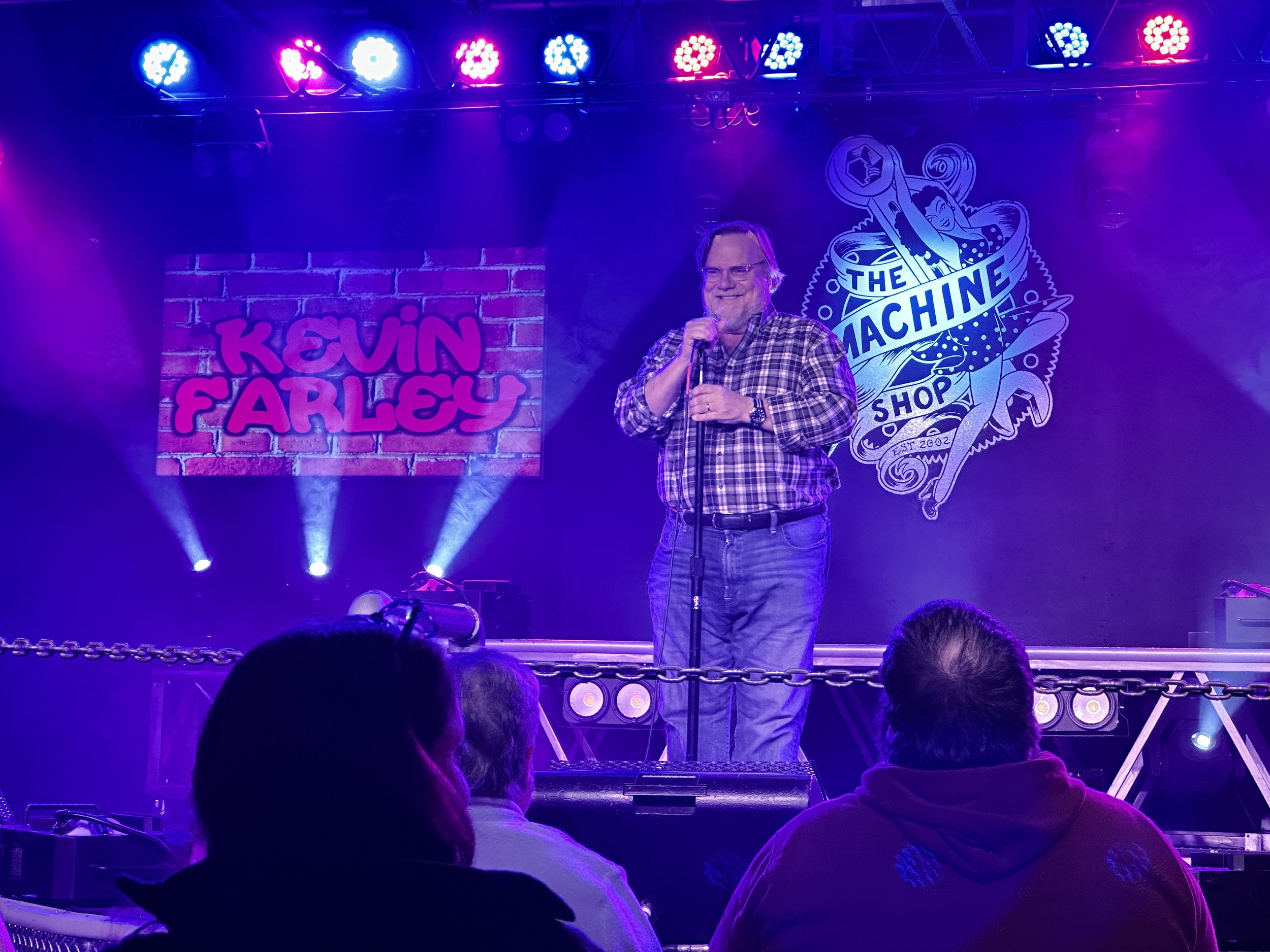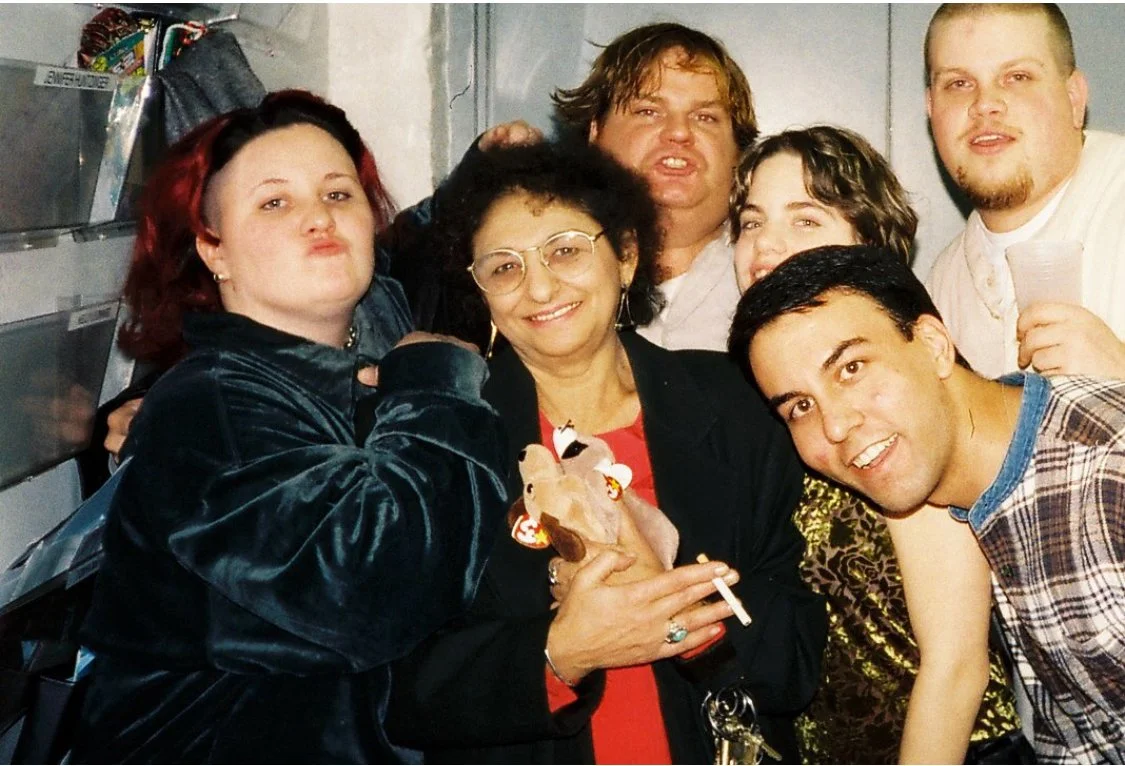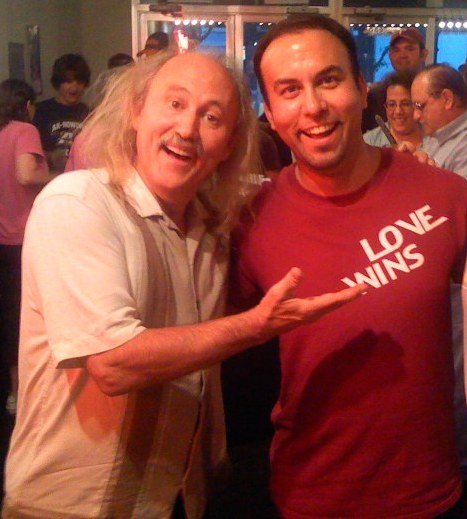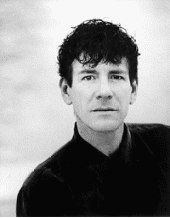As we parked the car a block away from the comedy theater, we looked over our shoulders and noticed another historic landmark: the Moody Church. Constructed in 1924, Moody Church was the result of the aggressive evangelism of Dwight L. Moody in the late 1800’s. Literally and figuratively, I believe that the intersection of church and comedy can be felt at the corner of North and Wells. Many Second City performers and students (including myself years later) would attend worship at Moody Church on Sundays at 5pm and then head over two blocks to the theater to create comedy. There’s a symbiotic relationship there; comedy and leadership are not as far apart as you would suspect.
Fresh out of high school, I found the comedy show that evening to be hypnotic and mesmerizing. I was hooked: Second City was where I wanted to go and learn the principles of comedy. As soon as I could afford a full tank of gas later that summer, my aim was to wave goodbye to Iowa and hello to Chicago.
Turns out I needed to arrive in the Windy City a few days ahead of Columbia College’s freshmen move-in so that I could interview at Second City for a hosting job. When I got the call a few days later that I was hired, I hit the roof! I was in! I didn’t care if there was grunt work involved and all my weekend hours would be spent cooking and cleaning; the idea of rubbing shoulders with established comedians was intoxicating.
One particularly busy night in the fall of 1997, I was handed the tickets for a couple who were eager for the evening’s performance. I quickly sized them up and was astonished at the sight. The young woman was HAWT (yes, H – A – W – T)! She was beautiful, blonde, in a gorgeous evening dress, and had sparkling blue eyes. Hawt.
Her date, on the other hand, was NAWT! He was overweight and sweaty, sported slicked-back-yet-frazzled hair, tie askew . . . definitely NAWT! Do you remember the old musical segment on Sesame Street: “One of these things is not like the other?” That was this guy! He did NOT go with HER! As I began leading them to their table, I silently wondered, What is this, a joke? Did she lose a bet somewhere? Is this guy her cousin?
Their tickets were for the best seats in the house—remarkable because only Second City alumni or relatives and close friends can secure the best seats. I glanced back at the couple to see if I recognized either of them. Nope. Must be friends of a cast member, I guessed.
As I politely pulled back their chairs to help seat them, I looked down at the tickets one last time to quickly use the last name listed and wish them a good evening. They were sitting down as I realized what I was saying mid-sentence: “Thank you for being our guests tonight at Second City, Mr. Faaaaaaaarrrrrrrrley.” My mouth went dry as cotton balls and my palms became clammy. This was Chris Farley!
As I stumbled back toward my manager to assist the next guests waiting in line, she grabbed my ear. “You see Mr. Farley over there with his date? We want to make sure he has a very good time tonight. At intermission, I don’t want anyone bugging him for photos or autographs. It’s going to be YOUR job to usher Farley out of the room and act as his bodyguard.”
Bodyguard? Me? Hadn’t my manager seen my body frame? If I were a superhero, my name would be Captain Toothpick. At intermission, I dutifully whisked Chris Farley out of the main theater and into a holding room. He was very kind, down-to-earth, and, well, sweaty. But I didn’t mind; I had a front-row seat to a rich and famous comedian! We exchanged some small talk, and at the end of the night I thought that was that. Turns out Mr. Farley would be making multiple visits to the theater over the coming weeks . . . and I was the Tommy Boy star’s designated body man for each visit. Over time I was able to closely observe the side effects of stardom.
I remember one night Farley came barreling into the theater with a group of friends. Once we had them seated at a large table near the front, Farley pulled out a wad of hundred dollar bills and began liberally handing them out to his party. They pocketed their cash and scattered. I thought it was odd.
Another time Chris came to a show under the influence of something. He looked like more of a mess than usual and smelled like he hadn’t showered in days. When he began loudly heckling the comedians on stage, I had the awkward duty of discreetly trying to remove Chris Farley from the audience.
Even though I was a front-row witness to some blaring warning signs, I had zero sway over Farley’s downward spiral. My role was being the young, impressionable college kid from Iowa who thought it was cool to hang out with one of my comedy idols. As I bragged about my adventures to friends back home, folks thought I was making this stuff up.
So I became determined to snap a picture with Farley.
My opportunity came that December at Second City’s annual Christmas party for employees and alumni. Closed to the public, this was a night of celebration and revelry . . . and Chris Farley was there! I found him in the back swapping cocaine with some of the kitchen staff. He looked like he had been partying for a few days straight at that point. I jumped in with friends for a group shot, and there in the back of our photo, posing alongside us college kids, was a drunk Chris Farley.










